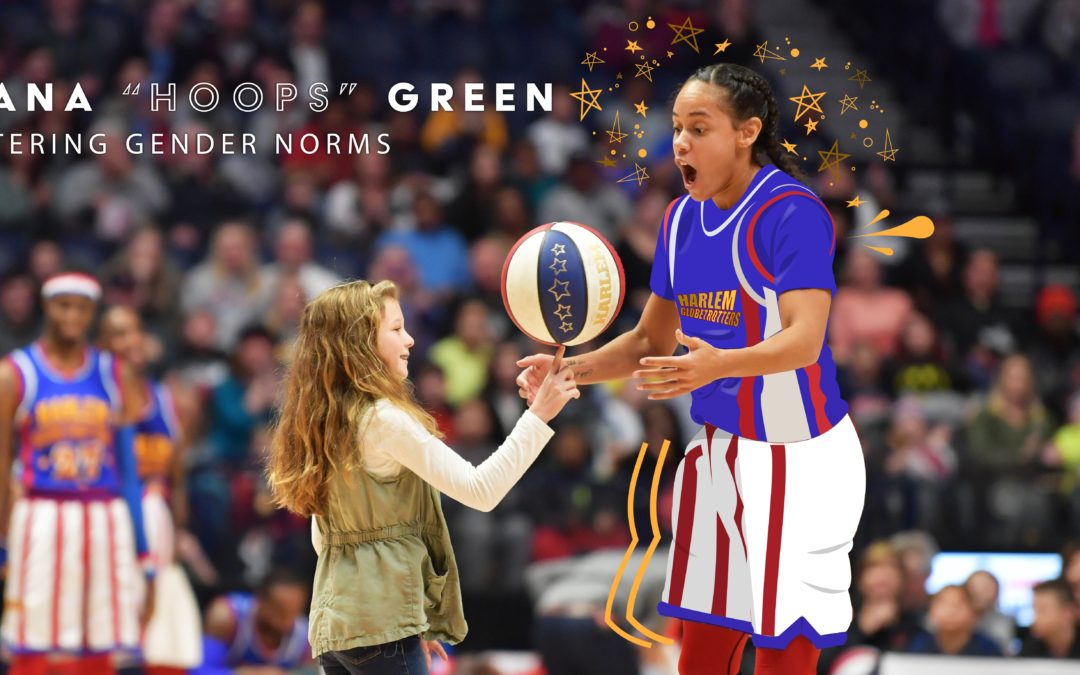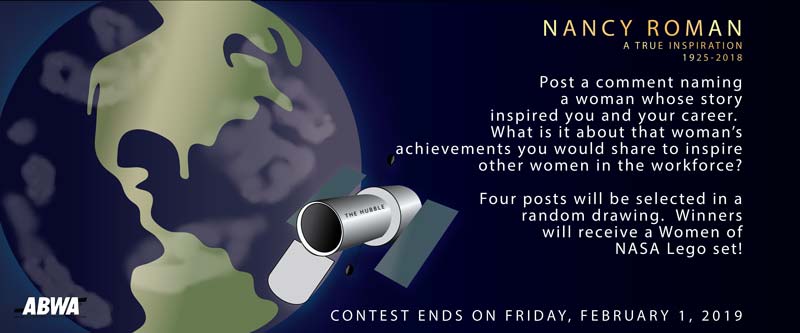
by American Business Women's Association | Feb 27, 2019 | Blog, Uncategorized
By Ted Janusz
Can you relate to this? John Wannamaker, the Philadelphia department store magnate, said “Half the money I spend on advertising is wasted; the trouble is, I don’t know which half.” But there is one form of marketing, that ALWAYS works … what is it?
WORD OF MOUTH!
Of course, now with the internet and social media, you could call it WORLD of mouth marketing. People are six times more likely to rely on the word of other people when making a buying decision rather than advertising.
In fact, 80% of consumer buying decisions are based on personal recommendations. Here’s why it works …
The average American adult knows 400 people … people you work with, went to school with, or people you know socially. If you assume each of those 400 people know 400 others (of course, there will be some overlap – but let’s keep it simple), you now have an immediate network of 140,000 people.
And if you assume those 140,000 people know 400 others, you are up to one-third of the US population. And what will people spread about your business, good news or bad? Right! Bad news!
Your average satisfied customer will tell 5 to 8 others. But your average upset customer (if you have any) will 10 to 16. In fact, one in five will tell 20 people how upset you have made them.
In their book Creating Customer Evangelists, authors Ben McConnell and Jackie Huba say, “Competition for entertainment dollars – where Dallas Mavericks owner Mark Cuban says he competes – is fierce. To succeed, he must continually focus on increasing the average lifetime value of a Mavs season ticket holder. In 2002, that figure was $300,000, according to Cuban. “The Chicago Cubs, you’ve got to wait in line to get your season tickets,” he says. “That’s the goal … then I don’t have to spend lots of money on salespeople and all kinds of support efforts – I’ve just got to keep [customers] happy. It’s a lot easier to keep ‘em happy than to go out and get new ones to replace ‘em.”
Now the lifetime value of one of your customers may not be $300,000 like it is for the Dallas Mavericks. But once you determine what that value is for you, you’ll realize how important to keep those customers happy – since they, bar none, are your best source of marketing.
Ted Janusz, MBA, CSP is a Certified Speaking Professional who has delighted audiences for more than 5,000 hours, in 49 of the 50 United States, in Canada from Halifax to Vancouver, in Australia, Mexico, and Puerto Rico. Learn more at www.januspresentations.com.

by American Business Women's Association | Feb 10, 2019 | Blog
By Amanda Peterson, Enlightened Digital
The marketing landscape is nothing near what it was 10 years ago, or even 5. As technology continues to evolve and expand its capabilities, marketing has transformed into an industry that requires constant learning and adaptability. It demands an increased aptitude for technical skills, so it’s vital that marketing professionals hone their technical skill set. TEKsystems Digital reports however, that 95 percent of surveyed marketing leaders have been negatively impacted by the lack of qualified talent.
With technology advancing at rapid speeds, it might seem like there’s a lot to master— but there are also some great ways to get your technical expertise up to speed quickly. Here are four of the top technical skills that marketers need to learn.
1. DATABASE QUERYING
Learning how to run database queries is one of the most important technical skills a marketer today can have, as it enables them to understand how customers and prospects are behaving. Most companies use SQL-based databases, which are used to query, insert, update and modify data. For example, if a marketer wants to know the average transaction value within a certain time frame for a user within a certain demographic, having the ability to perform database queries means they can answer these questions on their own.
Learning to query a database independently means that marketers can consistently understand how their customers are changing and reacting to a product. It allows marketers to make data-driven decisions, make decisions faster and unpack key insights that lead to more efficient and effective marketing.
2. HTML
As digital marketing tactics become more prominent, marketers can benefit from learning some coding basics. HTML provides the structure of a web page and outlines the elements each page will contain. For example, HTML might specify that a web page contains a site title, navigation bar, sidebar and content in the form of page copy or a blogroll.
Whether it be writing blog posts or designing a new product page, many marketing roles involve a great deal of online content creation. Learning HTML will expedite the process of getting that content set up correctly, and looking good. You no longer need to wait for a developer to tweak an email template, format your landing page or make an important update on your website. Even if your role never requires you to write code, being familiar with HTML, at the very least, can make cross-team communication much easier.
3. MOBILE VIDEO PRODUCTION
Online video marketing has grown significantly in 2018, as it’s been popular for both consumers and brands alike. As social media platforms like Instagram, Facebook and YouTube expand their features for livestream and short-form video, many brands have recognized and capitalized on its potential to boost consumer engagement. As Amber van Moessner, Director of Content at Livestream, states, “Audiences spend more time with live video, and are willing to show up, participate, and join the conversation on social media more so than with VOD (video on demand) or blog content.”
Marketers that master video production for mobile platforms can ensure that these videos are as polished and compelling as possible. Learning how to produce this style of content can put brands ahead of their competitors and capture the attention of today’s mobile-focused consumer.
4. SEO
While you don’t have to be an SEO (search engine optimization) professional, it’s important to have a general knowledge about how SEO operates and how it relates to marketing. Organic search results have the potential to be much more powerful than paid ads, especially if they make it to the first page. This is vital for marketers to improve their brand recognition or generate leads. In fact, 57 percent of B2B marketers stated that SEO generates more leads than any other marketing initiative.
Best practices for SEO are constantly evolving, so this is one skill that might require consistent refining through SEO courses. Marketers who do understand SEO best practices however, can create content that increase engagement, site traffic and sales conversions.

by American Business Women's Association | Feb 1, 2019 | Blog
By Leigh Elmore. Leigh is editor-at-large for ABWA’s Women in Business Magazine. He lives and works in Kansas City, MO.
Flashy dribbler for the Harlem Globetrotters takes it to her male competitors. If you play for the Harlem Globetrotters, then you have to have a nickname. Many people “of a certain age” can remember some nicks of the Globetrotters’ past: “Meadowlark” Lemon and Fred “Curly” Neal, for example.
Well, move over guys, because these days the three traveling squads of Harlem Globetrotters boast players with the names such as “Champ” Thompson, “Ice” Hrynko, “Torch” George, “TNT” Lister, “Mighty” Mortimer, “Swish” Young and Briana “Hoops” Green, the seven women currently listed on the Globetrotters’ roster.
Green is the 15th woman to don the red, white and blue Globetrotters uniform, beginning with Lynette Woodard who joined the team in 1985.
“I first saw the Globetrotters when I was seven years old,” Green told ABWA recently. “I didn’t know who they were, but I certainly was entertained and impressed. But, at that young age I already knew that I wanted to play basketball professionally.”
During that time period Green was regularly playing pick-up ball with her older brother and other kids in the neighborhood of her hometown, Lexington, KY. She later went on to star on her high school team, Lexington Catholic, and helped the team garner two state championships on her way to playing college ball at the University of Texas-El Paso. Green would then play professionally in the Czech Republic, Spain and Mexico.
However, in 2017 she felt like she needed a change. “I was trying to figure out if I wanted to continue to play professionally overseas,” said Green. “It just so happened that I posted a video on Facebook of me dribbling, and the video went viral. Everybody was tagging the Globetrotters and how I should be on the team so a recruiter saw it and he invited me to try out.”
And the rest as we say is history. She was invited to join the team where she fills one of the roles as ball-handler and flashy dribbler. Now in her third year with the Globetrotters, she noted that she had played against boys from an early age and, “I played on a lot of co-ed teams,” along the way as well.
“As far as my dribbling ability, I think I can compete with the best of them. The dribbling part always came naturally,” she said. It’s the Globetrotters’ entertaining repertoire of tricks that she needed to practice. “I do have to work on it.”
Since her debut with the Globetrotters, Green has learned a lot from the teammates she calls brothers. Being a Globetrotter is all about providing entertainment—about mixing real, competitive basketball with the signature tricks and routines that fans have come to know and love. At the same time, it’s also about service and using the iconic Globetrotters brand for good.
“We are known for being ambassadors of good will,” she said. “It’s about being good role models for kids.” She says some of her favorite moments are talking to kids after the games. “I’m used to little girls looking up to another girl, but when a younger guy comes up to me and tells me that I’m their favorite basketball player, I’m like, ‘Yeah, we can do this!’” she said.
She and her teammates visit a lot of schools and hospitals as part of the Globetrotters’ goodwill efforts.
The Harlem Globetrotters have always been enthralling and accessible. But, by including female athletes in their engaging routines, they’ve anchored a new demographic: Girls. The women on their active roster have become role models for young women everywhere. While leagues like the Women’s National Basketball Association (WNBA) and the National Collegiate Athletic Association (NCAA) also showcase women’s basketball, playing on the Globetrotters gives Hoops and her female teammates a unique chance to match up against talented male athletes.
“It’s important that everyone knows that women are more than capable of competing at that level,” she said, “not just with basketball, with anything.”

by American Business Women's Association | Jan 31, 2019 | Blog
By Ted Janusz, MBA, CSP. Ted is a Certified Speaking Professional who has delighted audiences for more than 5,000 hours, in 49 of the 50 United States, in Canada from Halifax to Vancouver, in Australia, Mexico, and Puerto Rico. Learn more at www.januspresentations.com.
Do you need to write copy for a brochure or sales letter? I teach a copywriting workshop, so just for fun, I signed on to edit and write brochures and sales letters as a freelancer on Fiverr.com.
And it has been a blast! I have had the enjoyable opportunity to work with fun individuals all over the world, from a health and wellness practitioner in Ireland to a tour operator in Russia.
These professionals know their business, as I am sure that you do, too. But, as we shall soon see, that might actually be a detriment when trying to explain to others what you do. When composing a brochure or sales letter to describe your organization, avoid these four mistakes:
- Being “you” focused rather than “they” focused. Of course, you understand your business, and are anxious to tell others everything about what you do. Guess what? They don’t care! (At least, not yet.) The first thing you need to do is to write text that relates to them. (Notice how I did that from the first sentence in this article.)
- Providing too much detail. With a brochure, provide just enough information so that the future customer will want to contact you to get more details. One of the best ways to do this is to start with a story. And make the story be about them, such as structuring the brochure or sales letter with: Is this happening to you? If so, here is the solution.
- The curse of knowledge. You can be too close to your operation, so you cannot unlearn what you already know. Or the only way you can explain what you do is through the use of intimidating jargon. Use simple English instead. Adults do not like to admit when they do not understand. And a confused mind will never buy.
- Not “chunking” the information. 79% of your prospects and customers, when they go to the Internet, do not read; they scan instead. So for a brochure or sales letter, do not write lengthy prose; use short paragraphs, bullet points, and lots of white space. One of the exercises I have the class participate in is to write a random nine-digit number. Then I ask the class members if they could remember that number a week from now. Most say they could not. But then I ask them to insert a hyphen after the third and the fifth digit. Now, rather than a nine-digit number, they have a Social Security number which only has three “chunks” of information, making it far easier to remember.
If you avoid these four mistakes when composing your brochure or sales letter, you can and will get the results you desire.

by American Business Women's Association | Jan 19, 2019 | Blog
CONTRIBUTING WRITER, LEIGH ELMORE. LEIGH SERVES AS THE EDITOR -AT-LARGE FOR ABWA’S WOMEN IN BUSINESS MAGAZINE AND ACHIEVE NEWSLETTERS.
Pioneering Astronomer Nancy G. Roman was “Mother of the Hubble Space Telescope. Nancy Roman knew from a very early age that she wanted to be an astronomer. Her greatest challenge was convincing the world that she could be a very good one. Overcoming traditional gender roles in the scientific community was almost as daunting a challenge as paving the way for the Hubble Space Telescope, an achievement for which she is most remembered. Roman, known as the “Mother of Hubble,” passed away on Christmas Day 2018 at the age of 93. She was NASA’s first chief of astronomy and one of the first women executives for the agency. Her achievements will live on
Her family moved around the country frequently when she was growing up. Roman cited both of her parents’ interest in the natural world—and her time beneath the clear night skies of Reno, Nevada—as an inspiration for her early interest in astronomy. Fueled by a fascination for the stars, she began her own astronomy club with a group of neighborhood girls when she was 11 years old. Though she knew she wanted to be an astronomer by the time she entered high school, her guidance counselor, who belittled her desire to take mathematics instead of Latin, discouraged her.
A promising student at Swarthmore College, Roman still had to ignore warnings from the Dean of Women and other teachers about studying science, ultimately earning her B.A. in Astronomy in 1946. She later recalled that the only encouragement she was given during her undergraduate years was by a teacher who told her, “I usually try to dissuade girls from majoring in physics but I think maybe you might make it,” National Geographic has reported
Roman went on to receive her Ph.D. in Astronomy at the University of Chicago in 1949, where she worked for six more years at the Yerkes Observatory as an instructor and assistant professor.
Seeing little chance for tenure as a woman, Roman took a position at the U.S. Naval Research Laboratory in Washington, D.C. where she eventually won the trust of her peers and began to work in radio astronomy, geodetics, and microwave spectroscopy.
She attended a lecture on the origin of the moon given at the newly formed National Aeronautics and Space Administration in the late 1950s where she was presented with the opportunity to work for NASA and set up a program in space astronomy.
As she told National Geographic, “The idea of coming in with an absolutely clean slate to set up a program I thought was likely to influence astronomy for 50 years was just a challenge that I couldn’t turn down. That’s all there is to it.”
She dedicated her time at NASA to promoting, initiating and supporting in-space observation, from satellites to the Scout probe. In 1964, her name was even given to a newly discovered asteroid, 2516 Roman.
But Roman’s crowning achievement at NASA was perhaps the greatest gift ever given to astrophysics: the Hubble Space Telescope, the groundbreaking satellite observatory that has generated more than 1.2 million observations and 14,000 scientific papers. Roman tirelessly laid the foundation that eventually made NASA’s space-based observatory a reality.
She retired from NASA in 1979 having prepared the way for Hubble’s eventual launch in 1990. “My work helped others explore the evolution of the galaxy,” she told National Geographic. “I did not let the fact that I was a woman deter me.”
Source: National Geographic, Dec. 31, 2018










